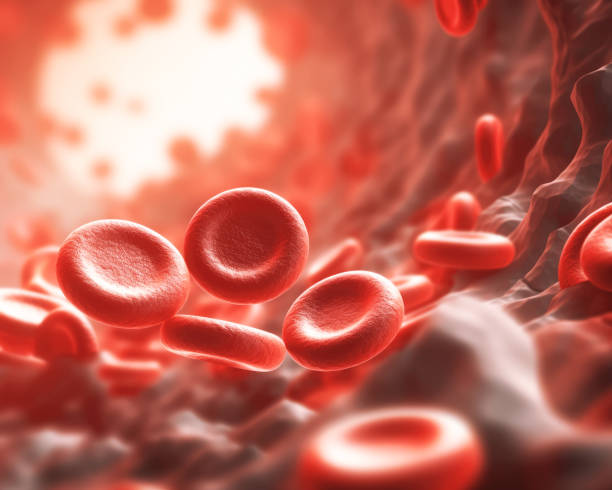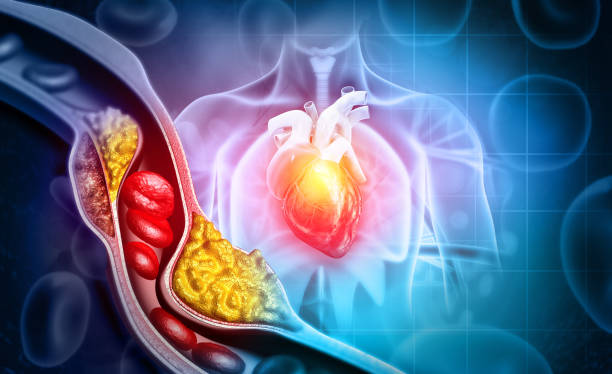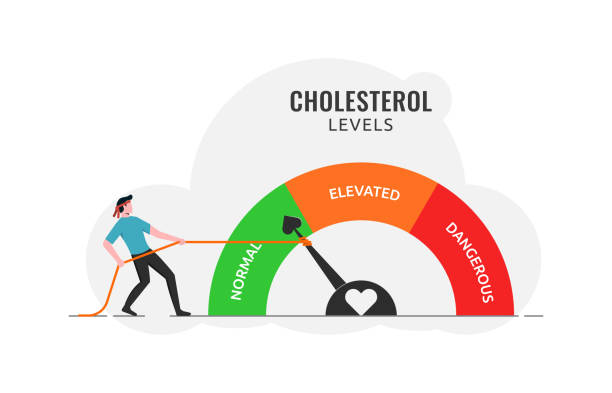Cholesterol Clarity: Understanding Your Body’s Silent Navigator
Cholesterol Clarity: Understanding Your Body's Silent Navigator

Cholesterol Clarity
Cholesterol is a substance that’s both vital and potentially harmful to our health, depending on its balance within the body. This article delves into what cholesterol is, its types, functions, sources, and its impact on health, as well as strategies for managing cholesterol levels to promote overall well-being.
What is Cholesterol?
Cholesterol is a waxy, fat-like substance that’s essential for the body’s proper functioning, playing a vital role in forming cell membranes, certain hormones, and vitamin D. Although it’s often viewed negatively due to its association with heart disease, cholesterol is indispensable for our health. It circulates in the blood in two main forms: Low-Density Lipoprotein (LDL), or “bad” cholesterol, which can lead to plaque buildup in arteries, increasing heart disease risk, and High-Density Lipoprotein (HDL), or “good” cholesterol, which helps remove LDL from the bloodstream. The body naturally produces all the cholesterol it needs, but dietary choices can significantly impact cholesterol levels and overall heart health.

Types of Cholesterol
There are several types of cholesterol, each playing a different role in the body, with the two most commonly discussed types being:
- Low-Density Lipoprotein (LDL) Cholesterol: Often labeled as “bad” cholesterol, LDL carries cholesterol from the liver to cells throughout the body. When too much LDL cholesterol is present in the blood, it can lead to the buildup of plaques on artery walls, increasing the risk of cardiovascular diseases such as heart attack and stroke.
- High-Density Lipoprotein (HDL) Cholesterol: Known as “good” cholesterol, HDL helps remove LDL cholesterol from the arteries, transporting it back to the liver, where it’s processed and eliminated from the body.
Other relevant components related to cholesterol include:
- Very-Low-Density Lipoproteins (VLDL): Similar to LDL, VLDL carries triglycerides, another type of fat, in the blood. While not discussed as frequently as LDL and HDL, VLDL can also contribute to the buildup of plaque in the arteries.
- Triglycerides: Although not a type of cholesterol, triglycerides are often measured alongside cholesterol levels in a lipid panel. High levels of triglycerides can increase the risk of heart disease, particularly when combined with high LDL or low HDL cholesterol levels.
Understanding these different types of cholesterol and their roles can help in managing heart health and reducing the risk of cardiovascular diseases.
Functions of Cholesterol
Cholesterol, despite its negative reputation, plays several crucial roles in the body, essential for maintaining good health:
- Cell Membrane Structure: Cholesterol is a key component of cell membranes, providing necessary stability and fluidity. It helps in the formation and maintenance of cell membranes, enabling cells to function properly, communicate with each other, and adapt to temperature changes.
- Hormone Production: Cholesterol is vital for synthesizing various hormones, including steroid hormones such as cortisol, which helps regulate metabolism and immune response, and sex hormones like testosterone, estrogen, and progesterone, which play key roles in reproductive functions.
- Vitamin D Synthesis: When the skin is exposed to sunlight, cholesterol is converted into vitamin D, a crucial nutrient that aids in calcium absorption for healthy bones and teeth and plays a role in immune system function.
- Digestion: Cholesterol contributes to the production of bile acids in the liver. Bile acids are essential for the digestion and absorption of dietary fats and fat-soluble vitamins (A, D, E, and K) in the intestine.
- Nerve Function: Cholesterol is a component of the myelin sheath, a layer that surrounds and insulates nerve fibers. This insulation is crucial for the proper conduction of electrical impulses along nerve cells, enabling effective communication within the nervous system.
Understanding these functions highlights the importance of cholesterol in various physiological processes and underscores why maintaining balanced cholesterol levels is vital for overall health.

Sources of Cholesterol
Cholesterol sources can be categorized into two main types: endogenous and exogenous.
- Endogenous Cholesterol: This is cholesterol produced internally by the body, specifically by the liver. The liver synthesizes about 70-80% of the body’s total cholesterol, which is vital since cholesterol plays essential roles in cell structure, hormone production, and other bodily functions. The body regulates its internal cholesterol synthesis based on dietary intake to maintain a balance.
- Exogenous Cholesterol: This refers to cholesterol that comes from the diet, found in animal-based foods. Unlike plants, animals have liver equivalents and produce cholesterol, so when you consume animal products, you’re ingesting their cholesterol. Common dietary sources include:
-
- Meat: Especially red meats and organ meats like liver are high in cholesterol.
- Dairy Products: Full-fat dairy products, such as cheese, milk, and butter, contain significant cholesterol levels.
- Eggs: Particularly the yolks, are well-known sources of dietary cholesterol.
- Seafood: Certain types of shellfish, like shrimp and lobster, can be high in cholesterol, though they vary in their fat content.
It’s important to note that dietary cholesterol has a less significant impact on blood cholesterol levels than the intake of saturated and trans fats. The body can adjust the amount of cholesterol it makes based on dietary intake. Thus, while it’s essential to be mindful of cholesterol in foods, it’s also crucial to pay attention to the overall quality of fats in the diet.
Impact on Health
Cholesterol’s impact on health is significant and multifaceted, influencing various bodily functions and contributing to the risk of several diseases, particularly cardiovascular diseases.
-
Cardiovascular Health:
Elevated levels of LDL (low-density lipoprotein) cholesterol are a major risk factor for cardiovascular diseases, including coronary artery disease, heart attacks, and strokes. LDL cholesterol can accumulate in the artery walls, leading to the formation of plaques—a process known as atherosclerosis. These plaques can narrow and harden the arteries, reducing blood flow and potentially leading to blood clots that can cause heart attacks or strokes.
-
HDL and Heart Health:
cholesterol non hdl levels are generally considered protective against heart disease. HDL helps transport cholesterol from the arteries back to the liver for excretion or reuse, a process often referred to as “reverse cholesterol transport.” This mechanism helps prevent the arterial buildup of cholesterol, thereby reducing the risk of cardiovascular diseases.
-
Impact of Dietary Cholesterol:
While the body regulates its cholesterol synthesis, excessive dietary intake of foods high in saturated fats and trans fats can lead to elevated cholesterol levels. It’s important to note that the impact of dietary cholesterol on blood cholesterol levels varies among individuals.
-
Other Health Risks:
Beyond heart disease, high cholesterol levels can contribute to other health issues. For example, high cholesterol can be a risk factor for peripheral artery disease and is associated with an increased risk of developing type 2 diabetes. There’s also emerging research exploring the link between cholesterol and brain health, including its potential role in conditions like Alzheimer’s disease.
In summary, while cholesterol is essential for various bodily functions, maintaining balanced cholesterol levels is crucial for overall health. High LDL cholesterol levels are particularly harmful, increasing the risk of cardiovascular diseases, which are leading causes of morbidity and mortality worldwide. Thus, monitoring and managing cholesterol levels through lifestyle choices and medical interventions when necessary is key to maintaining cardiovascular health and overall well-being.

Managing Cholesterol Levels
Here are key strategies for managing cholesterol levels effectively:
-
Dietary Modifications:
-
- Reduce Saturated and Trans Fats: Limiting intake of foods high in saturated fats (like red meat and full-fat dairy products) and trans fats (found in some fried and processed foods) can reduce LDL cholesterol levels.
- Increase Fiber Intake: Eating more soluble fiber, found in foods like oats, fruits, vegetables, and legumes, can help lower LDL cholesterol.
- Incorporate Heart-Healthy Fats: Include sources of monounsaturated and polyunsaturated fats, such as avocados, nuts, seeds, and olive oil, which can help improve HDL levels and reduce LDL levels.
- Mind Dietary Cholesterol: While dietary cholesterol’s impact on blood cholesterol is less significant than that of saturated and trans fats, individuals with high cholesterol or heart disease risk should still be mindful of their intake.
-
Physical Activity:
-
- Engaging in regular physical activity can help raise HDL cholesterol and lower LDL cholesterol. Aim for at least 150 minutes of moderate-intensity or 75 minutes of high-intensity exercise each week, as recommended by health guidelines.
-
Weight Management:
-
-
Shedding extra pounds can lead to a reduction in LDL cholesterol levels and a rise in HDL cholesterol levels. Even a modest weight loss can have significant benefits for cholesterol levels and overall heart health.
-
-
Smoking Cessation:
-
- Quitting smoking can improve HDL cholesterol levels and provide numerous other health benefits, including improved heart and lung function.
-
Alcohol Moderation:
-
- Consuming alcohol in moderation can potentially lead to slight increases in HDL cholesterol, but excessive alcohol intake can have the opposite effect and contribute to other health risks.
-
Medication:
-
- When lifestyle changes are not enough to bring cholesterol levels to a healthy range, medications, particularly statins, may be prescribed. Statins work by reducing cholesterol production in the liver and can significantly lower the risk of heart attacks and strokes.
-
Regular Monitoring:
-
- Regularly checking cholesterol levels through blood tests is vital for knowing your levels and making informed decisions about your health management strategies.
By adopting these lifestyle changes and following medical advice, individuals can effectively manage their cholesterol levels, reducing their risk of heart disease and improving their overall health.
Factors Influencing cholesterol levels
Several factors can influence cholesterol levels in the body, affecting both the total cholesterol and the balance between LDL (bad) cholesterol and HDL (good) cholesterol. Understanding these factors can help individuals manage their cholesterol levels more effectively:
-
Diet:
Diets high in saturated fats, trans fats, and cholesterol can increase blood cholesterol levels, particularly LDL cholesterol. Conversely, consuming foods rich in soluble fiber, omega-3 fatty acids, and unsaturated fats can help improve your cholesterol profile.

-
Weight:
Being overweight or obese can raise LDL cholesterol and lower HDL cholesterol, contributing to the risk of cardiovascular diseases. Losing weight can help improve your cholesterol levels and overall heart health.
-
Age and Gender:
Cholesterol levels naturally increase with age. Before menopause, women tend to have lower total cholesterol levels than men of the same age. Following menopause, there is a tendency for women’s LDL levels to increase and HDL levels to decrease.
Your genetic makeup can significantly influence your cholesterol levels and how your body metabolizes fat. Familial hypercholesterolemia is a condition characterized by very high cholesterol levels and an increased risk of heart disease.
-
Medical Conditions:
Certain medical conditions can impact cholesterol levels. For example, diabetes, kidney disease, liver disease, and hypothyroidism can all affect cholesterol metabolism and levels in the body.
-
cholesterol medications:
Some medications can impact cholesterol levels, including certain types of diuretics, beta-blockers, and steroids. Always discuss the potential side effects of your medications with your healthcare provider.
-
Smoking:
Smoking can lower HDL cholesterol and is a major risk factor for developing heart disease. Quitting smoking can improve your HDL cholesterol level and overall cardiovascular health.
-
Alcohol Consumption:
Moderate alcohol consumption has been linked to higher levels of HDL cholesterol, but excessive alcohol intake can increase total cholesterol levels, including both HDL and LDL cholesterol.
Chronic stress may indirectly influence cholesterol levels by affecting lifestyle choices, such as diet and physical activity. Some studies suggest that stress itself can directly impact cholesterol metabolism, though more research is needed in this area.
By understanding these factors and how they interact with one another, individuals can take proactive steps to manage their cholesterol levels and reduce their risk of heart disease. It’s important to work with healthcare providers to develop a personalized plan that considers all these influencing factors.
Conclusion
Cholesterol is a vital component of the body, playing key roles in hormone production, digestion, and cellular function. However, maintaining the right balance of cholesterol is crucial for heart health. By understanding the types of cholesterol and how they affect the body, individuals can make informed choices about their diet, lifestyle, and health. Regular check-ups and conversations with healthcare providers can help manage cholesterol levels and reduce the risk of cardiovascular diseases, ensuring a healthier life.





